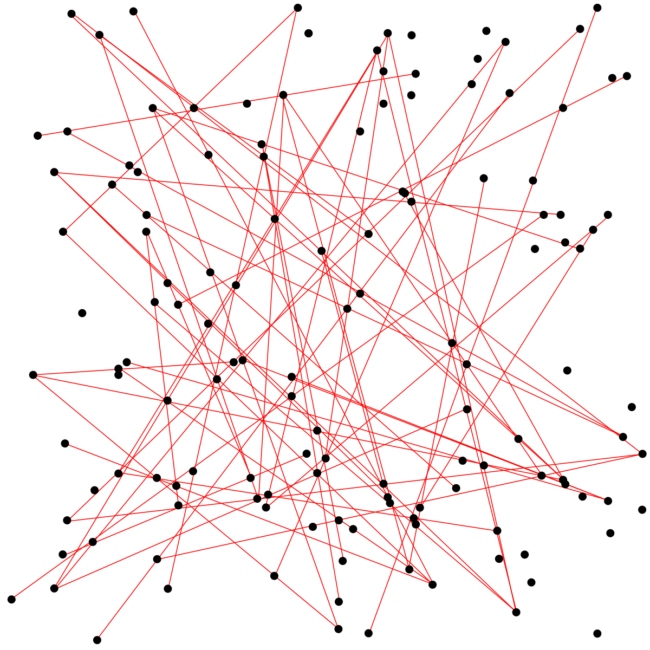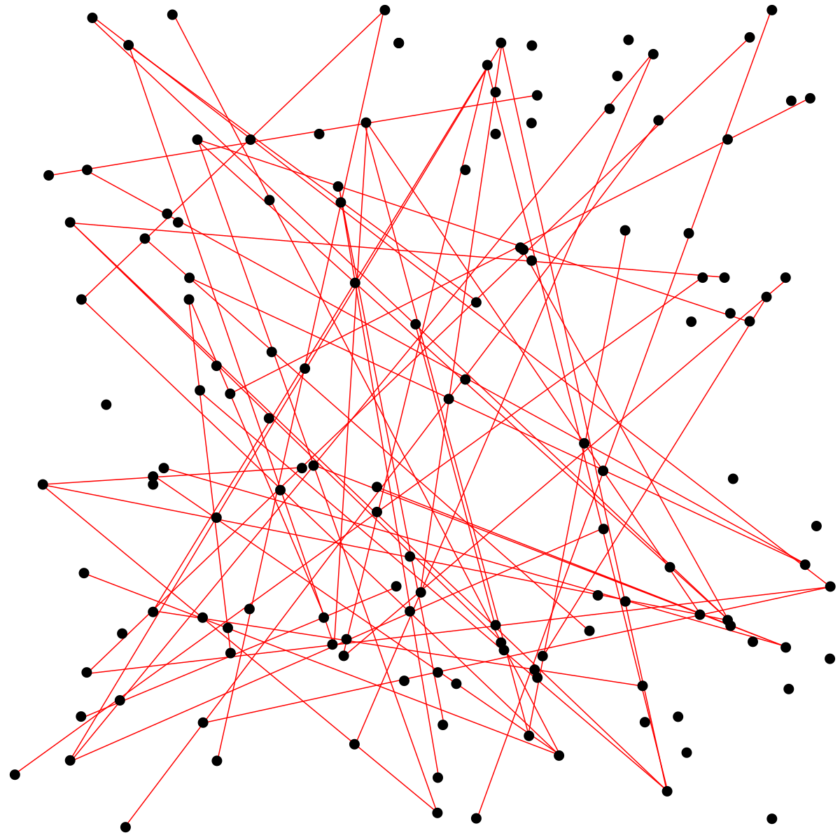
Are you familiar with the concept of a ley lines?
These are claimed to be special lines of earth energy that run between ancient archaeological sites or monuments. The thinking is not that such ancient monuments generate this energy, but rather that ancient peoples were aware of these, and so they built ancient monuments in such places. If like me, you grew up devouring the various mystical books doing the rounds then you will have no doubt come across these at some point. It is a topic that involves not only pseudo-archeology, but also mysticism in general and surprisingly enough UFOs. The concept has perhaps now more or less embedded itself as a cultural meme these days.
Let’s dig into this a bit and see if there is any truth to it.
Where did the idea for Ley Lines originally come from?
Is this an ancient belief that has always been with us or is it instead an idea that has recently emerged?
The surprising answer is that it is quite recent. It was first started by a self-taught archaeologist, Alfred Watkins. In 1921 he made the observation that ancient monuments appeared to all line up. After thinking about this, he suggested that perhaps these had been setup like this in neolithic times as line-of-sight navigational markers.
That by itself comes across as a reasonable hypothesis, but this is also a rather different than the modern popularised concept of energy lines. It was however the foundation for what was to come a bit later. I’ll describe how this was taken up and inflated into the far more familiar new-age belief a bit further on. First, a few more basics.
Why the name “Ley”, what does this mean?
The term “Ley line”, was coined by Watkins when he observed that many of these lines passed through places that had names with “ley” in them. The word ley is a variant of lea, meaning grassland, clearing, or pasture. As you might guess, towns and villages with that as part of the name are rather common in the UK.
How did the professionals react to this Watkins hypothesis?
Not well, it was, and still is, dismissed.
The counter arguments are quite sensible …
- In the UK there are a very high number of ancient sites, so the chances of finding straight lines that occur by chance are quite high. If curious, here is an interactive map that illustrates just how numerous these are.
- Watkins used maps to identify his ancient markers. He did not test his hypothesis by going out and checking to see if they could indeed have been utilised as navigational markers.
Just using a map introduced many problems. Most notable is the fact that it is inaccurate due to problems of scale. A 1/4 mm line on a 1-inch to 1-mile map represents a 50 foot wide path.
Why did “Ley Lines” become a popular New Age belief?
Watkins was attempting something serious and so the modern understanding this all has was very much not him. His “line-of-sight navigational markers” idea contained no mysticism at all. Others checked, and did not find the idea to be compelling or viable, hence it faded away, and was more or less forgotten about.
The resurrection and repurposing of the idea came via author, John Michell. He not only revived Watkins Ley lines, but blended the concept in with some Chinese mysticism, lung mei, within his 1969 book called “The View Over Atlantis”
Critical Thinking Note: The word “Atlantis” in the title here is a big bold red flag that rather robustly announces that this has leapt beyond facts and jumped off into wild speculation.
It was a popular book, and so it succeeded in creating the ley line concept as we now know it. Throughout the 70’s other similar writers quickly embraced this basic idea, refined and tweaked it with enhancements that mixed in dowsing, along with other new age beliefs. This resulted in the promotion of the idea that these ley lines were conductors for “spiritual” power.
Critical Thinking Note: The term “Spiritual” power does not actually describe anything measurable or detectable. Such terms have a great deal to do with selling books to a specific demographic and nothing at all to do with archaeological sites or for that matter science in any way at all.
The key point is this. The real author of the modern ley line concept was not Watkins in 1921, but Michell in the 1970s who kick-started all these “Earth Mysteries”. It really is that new, and like many ancient mystical beliefs, is not actually ancient at all.
There Must be something to it all, look at all those lines
The term you are looking for is pareidolia.
Given enough random data points you can draw lots of lines and attribute a “spiritual energy” meaning to them if you wish. It need not be ancient monuments, any random set of points will do.
To make this point, Matt Parker from the School of Mathematical Sciences at Queen Mary, University of London, brought a new twist to all of this. Instead of ancient monuments he rather famously used the locations of all Woolworths stores. They are all gone now, but we know where all those stores were. You can read about this here. The results revealed an exact and precise geometric placement of the Woolworths locations.
What should we conclude?
Some might suggest that the property management team in Woolworths worked with aliens when picking store locations. Then again, a far more reasonable explanation is that sitting between our ears is an immensely powerful pattern seeking engine that will find meaning in a collection of random data points.
Do you live at an intersection of magical ley lines?
With tongue placed firmly in cheek,Matt Parker also asks a further question within this Guardian article … “Did aliens establish a primitive postcode system in ancient Britain?”
The point he is making there is that there are enough ancient sites in the UK to enable you to place every single postal delivery point at the convergence of three or more ley lines between ancient monuments – everybody is equally special, no exceptions.
In Summary
Ley lines do not actually exist.
Lots of people believe they do, but with no compelling evidence that verifies any of the claims, we would be wise to be skeptical.
What is however inevitable is that the idea will persist and live on. It has become embedded within modern mysticism because it gives credence to the idea that earth energies exist and could potentially be tapped into by those that have the correct mind set. The lack of anything measurable or detectable will not in any way deter those who are convinced. This is because it has become part of a modern mystical religious experience, and so doubting that is to perhaps doubt something that has been embraced as part of a personal identity.
If you do still wonder if there is something to it all, then pause and remember the origin of it all. This was all the fallout from a desire to craft a popular and successful book in the early 1970s. It was not in any way related to an actual ancient belief, nor is it measuring anything real. Pluck out enough points from a map, and you quickly find that the easiest person to fool is perhaps yourself.
Some might of course exclaim, “But people can detect these with diving rods“. The problem with that is the observation that diving rods don’t actually detect anything. While something does happen, what is actually going on there is the ideomotor response and not an actual “earth energy”. That however is perhaps a topic for another day.
If interested in believing as many true things as possible, then when faced with claims like this, your very best friend is doubt.
Questions For Commenters
- Are you convinced that ley lines are real?
- If so, what personally convinces you of this? Clearly I have doubts, so I’d be interested on your take on this. What is it that you know that I don’t know?
- If you were to rate the strength of your belief in ley lines on a scale of 1 for not true at all, through to 10 for absolutely certain it really is true, then where on that scale would you place yourself? I’d also wonder of you have always held that number or if it has changed over the years, and so I’d also wonder what has changed your view on it all over time.
- If you are truly convinced it is real, then do you have any guidance on how it might be possible to test the idea and verify it?
